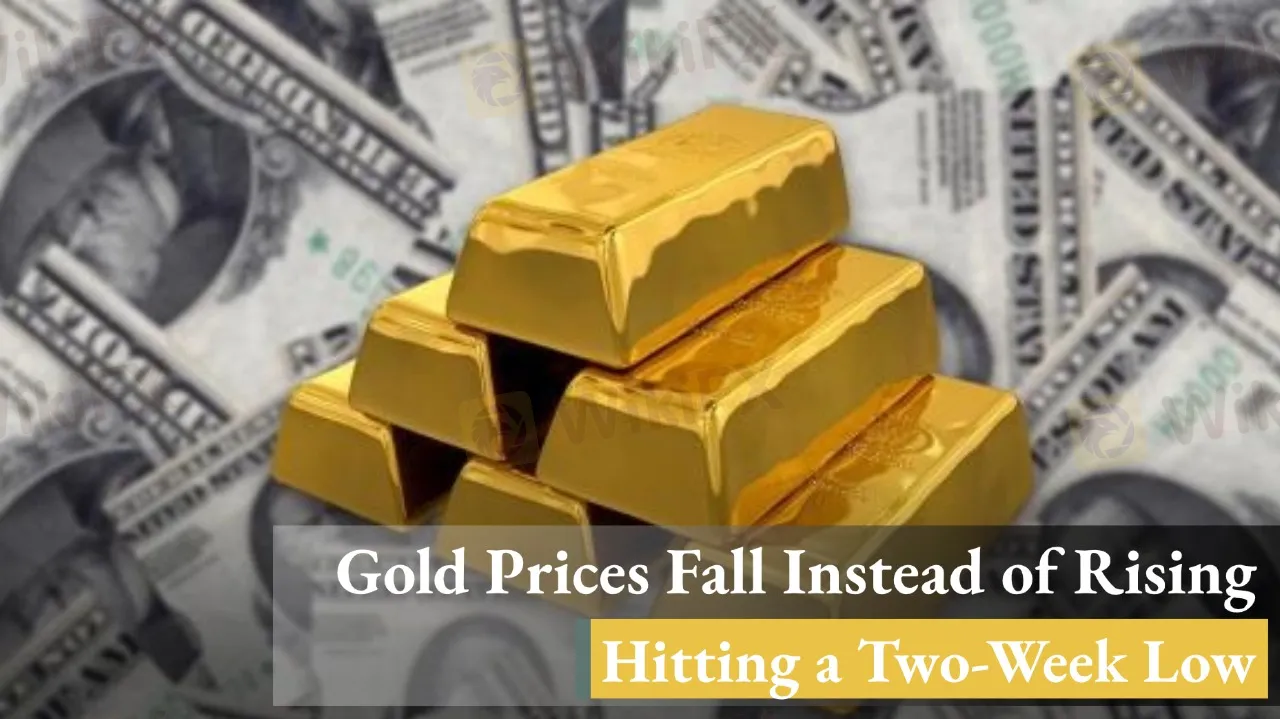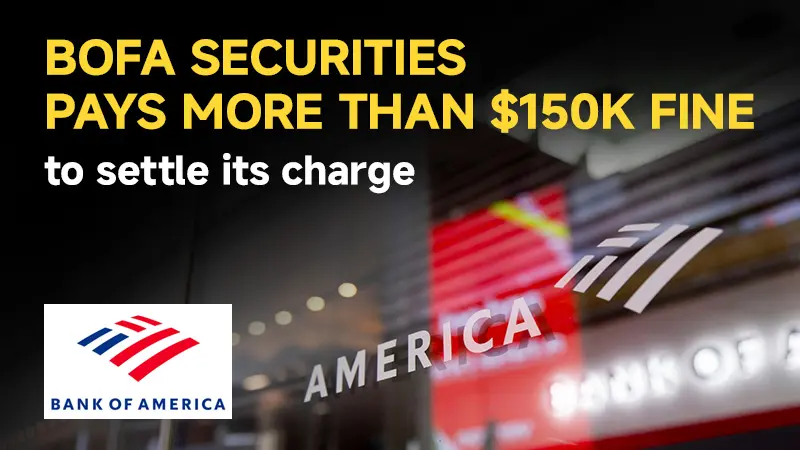简体中文
繁體中文
English
Pусский
日本語
ภาษาไทย
Tiếng Việt
Bahasa Indonesia
Español
हिन्दी
Filippiiniläinen
Français
Deutsch
Português
Türkçe
한국어
العربية
Gold Prices Fall Instead of Rising, Hitting a Two-Week Low
Abstract:Despite geopolitical tensions, gold prices have dropped sharply, reaching a two-week low. Markets refocus on Fed policy and broader macro trends.

Gold prices fell significantly this week. Spot gold closed at $3,368.68/oz on Friday, marking a 1.8% weekly decline and its lowest level since June 12. U.S. gold futures settled at $3,385.70/oz, down 0.7% for the week. Despite ongoing geopolitical uncertainty, gold failed to find traction, prompting investors to reassess their positions.
The recent downtrend reflects shifting market dynamics. Although gold initially appeared resilient, fading safe-haven demand and macro factors such as interest rate expectations and dollar strength ultimately dragged prices lower.
Why Are Gold Prices Falling?
Hawkish Fed Stance Pressures Gold
The Federal Reserve held rates steady this week, but the updated dot plot showed seven of 19 policymakers expect no rate cuts this year. This hawkish tone pushed the U.S. dollar higher, reducing the appeal of non-yielding assets like gold.
Geopolitical Risks Fail to Sustain Momentum
Although tensions in the Middle East remain, hints of de-escalation have reduced fear-driven buying. With the U.S. signaling it may delay involvement in regional conflicts, immediate demand for safe-haven assets has cooled.
Macro Fundamentals Weigh Heavily
Improved consumer sentiment and mixed leading indicators failed to spark fears of an imminent recession. Inflation concerns linger, but without a clear catalyst for risk aversion, investor appetite for gold has faded. Additionally, stronger U.S. economic data gave markets fewer reasons to bet on aggressive rate cuts.
Market Challenges Ahead
Uncertain Rate Cut Timeline
Despite softening inflation, the Feds mixed signals on future cuts have created confusion. If cuts are delayed further, it may dampen gold demand. Conversely, if cuts come quickly, it could spur a brief rally.
U.S. Dollar Strength
A strong dollar continues to cap gains for dollar-denominated commodities. If the dollar remains firm, gold may remain range-bound or trend lower.
Geopolitical Risk Remains Volatile
While conflict risk appears temporarily contained, any sudden escalation could reignite gold buying. However, market reactions have grown more measured, limiting upside potential.
Shift in Capital Flows
As investor sentiment leans toward risk assets like equities and high-yield debt, safe-haven demand for gold may decline further. Without sustained ETF inflows or central bank demand, golds support weakens.
Investor Challenges and Considerations
Timing the Market Becomes Tricky
Investors seeking to “buy the dip” must remain cautious, as policy shifts or geopolitical headlines could trigger unexpected volatility.
Managing Volatility
With price swings growing more frequent, position sizing and risk management become critical. Stop-loss orders and clear exit strategies are essential.
Diversification is Key
Relying solely on gold for risk protection is risky. Investors should consider complementing it with bonds, defensive equities, or foreign currencies like the yen.
Hedging Costs Rise
As interest rates stay elevated, using futures or options to hedge gold positions becomes more expensive. This erodes returns for leveraged investors.
Six Key Drivers of Gold Prices
1. Real Interest Rates (Nominal Rate - Inflation)
Lower real rates make gold more attractive since the opportunity cost of holding a non-yielding asset decreases. Rising real rates have the opposite effect.
2. U.S. Dollar Strength
Since gold is priced in dollars, a strong dollar makes gold more expensive in other currencies, suppressing global demand.
3. Inflation Expectations
Gold often acts as an inflation hedge. Rising inflation usually boosts gold demand. If inflation expectations ease, gold loses some of its appeal.
4. Geopolitical and Risk Sentiment
War, sanctions, or financial instability typically drive safe-haven flows into gold. But over time, markets may become desensitized to prolonged conflicts.
5. Central Bank and Institutional Buying
Recent years have seen consistent central bank gold purchases. If this trend reverses or pauses, gold could lose an important pillar of support.
6. Speculative Activity and Technical Levels
Traders often drive short-term gold movements. Key support/resistance levels, moving averages, and momentum indicators like RSI influence short-term trends. A break below $3,300 could spark further technical selling.
Gold remains a complex asset influenced by both macroeconomic and geopolitical factors. While its role as a safe haven endures, recent price action suggests investor conviction is wavering. With uncertainty ahead, strategic diversification and disciplined execution are more crucial than ever.

Disclaimer:
The views in this article only represent the author's personal views, and do not constitute investment advice on this platform. This platform does not guarantee the accuracy, completeness and timeliness of the information in the article, and will not be liable for any loss caused by the use of or reliance on the information in the article.
Read more

Voices of the Golden Insight Award Jury | David Bily, Founder and CEO of Moneta Markets
WikiFX Golden Insight Award uniting industry forces to build a safe and healthy forex ecosystem, driving industry innovation and sustainable development, launches a new feature series — “Voices of the Golden Insight Awards Jury.” Through in-depth conversations with distinguished judges, this series explores the evolving landscape of the forex industry and the shared mission to promote innovation, ethics, and sustainability.

ASIC Launches Preliminary Investigation into Clime Australian Income Fund
The Australian Securities and Investments Commission (ASIC) has launched a preliminary investigation into the Clime Australian Income Fund, examining whether the Fund’s Target Market Determination (TMD) and Product Disclosure Statement (PDS) comply with Australian financial regulations. The investigation will also assess whether any breaches of the law have occurred in relation to the Fund’s investment activities.

HSBC announced a $1.1 billion charge linked to the largest Ponzi scheme in financial history
The British banking giant HSBC Holdings Plc has announced a potential $1.1 billion charge connected to the long-running Bernard Madoff Ponzi scheme, following a legal ruling in Luxembourg. The claim stems from Herald Fund, a European investment fund that sued HSBC over alleged losses related to the Madoff fraud.

BofA Securities pays more than $150K fine to settle its charge
BofA Securities, Inc. (BofAS) has agreed to pay a $155,000 fine and accept a censure from the Financial Industry Regulatory Authority (FINRA) after FINRA found multiple violations of market trading and supervisory rules.
WikiFX Broker
Latest News
Fake Trading Platforms Are Spreading Fast Across Asia | How Investors Are Being Tricked
WikiFX Elites Club Committee Concludes Voting! Inaugural Lineup Officially Announced
eToro CopyTrader Expands to U.S. Investors
Is MH Markets Safe or a Scam? Regulation and Fund Security Explained
Ponzi Scheme Operator Sentenced to 14 Years in Western Australia
Chicago PMI Beats But Remains In 'Contraction' For Second Straught Year
How to Add and Take Out Money from Amillex Broker: A Complete Guide
T4Trade broker Review 2025: Is T4Trade Regulated?
FCA warning: These Firms are on the list
Don’t Get Scammed: A Roundup of Common Online Fraud Tactics in Forex
Currency Calculator



